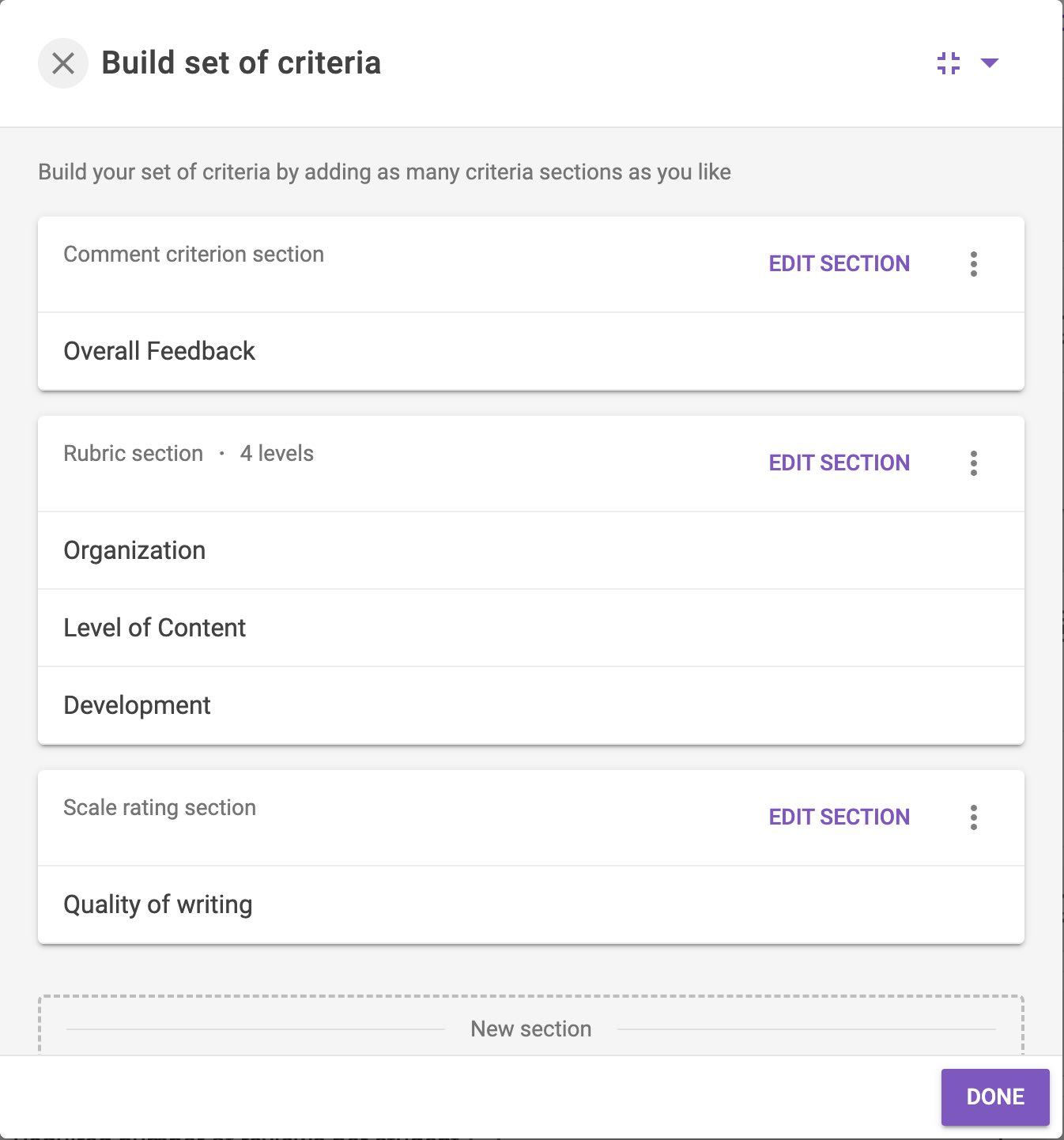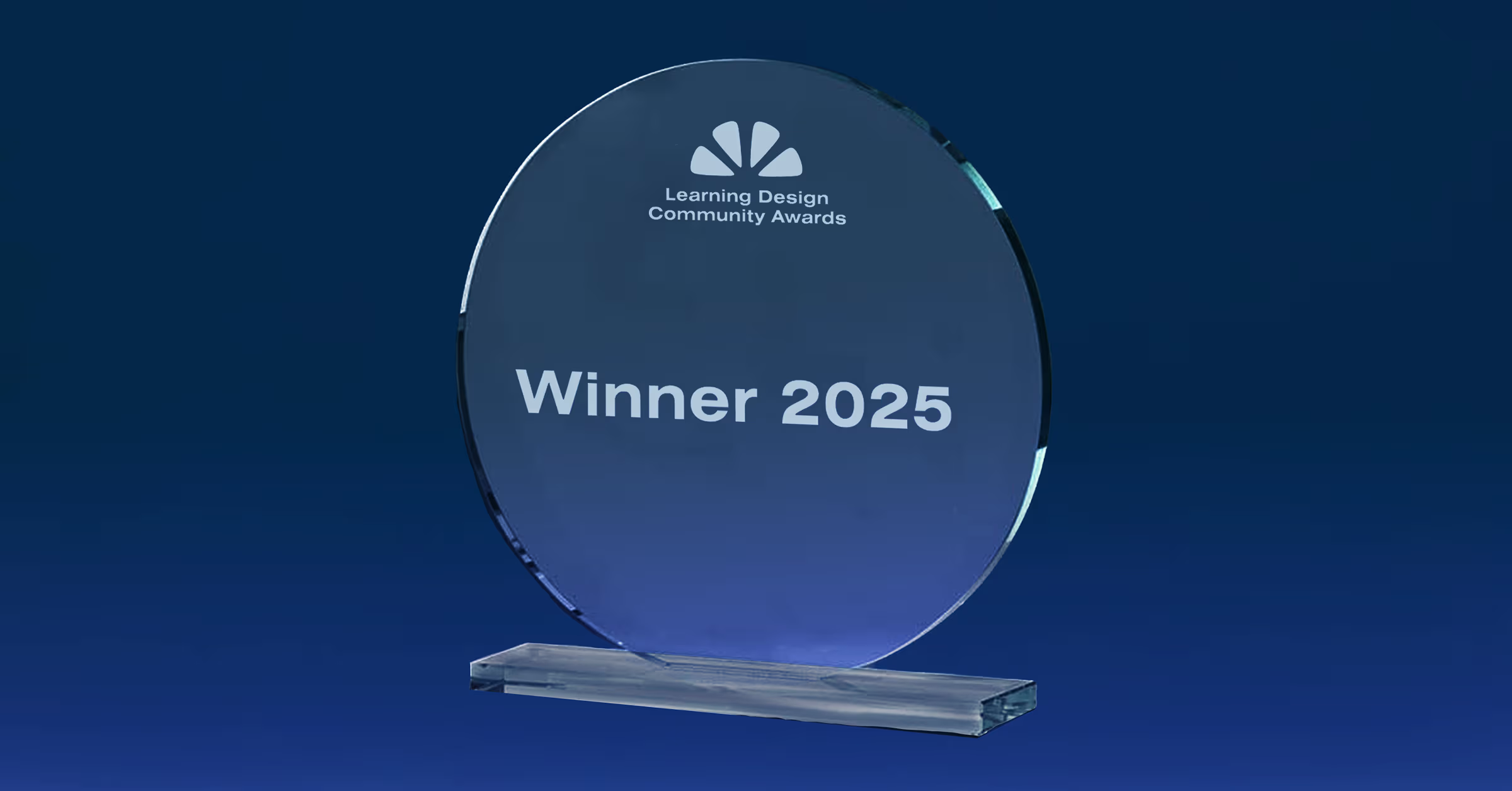Assessment and Feedback: Challenges and opportunities in the new normal
The role of assessment has experienced a major shift, assessment of learning to assessment for learning. In other words, evaluation of learning needs to allow for the development of 21st century skills and prepare students for the real world, while still ensuring inclusivity and accessibility.
Rethinking assessment doesn’t mean neglecting the traditional methods. In fact, instructors can definitely tailor the pen-and-paper tests to online examinations with a change in approach and the help of available teaching tools. In this article, we’d like to share 5 strategies to facilitate better assessment and feedback, by harnessing pedagogical technology. Each of these will be exemplified through use cases where teachers took advantage of different teaching tools to elevate their online assessment methods.

The challenges of assessment and feedback
Assessment and feedback are vital elements to drive student skills development, engagement, and success. Well-facilitated assessment and feedback provide faculties with ample learning analytics to make data driven decisions, at the same time allowing students to reflect on their own learning and improve their performance.
“Assessment is a central feature of teaching and the curriculum. It powerfully frames how students learn and what students achieve” – David Boud, Emeritus Professor, University of Technology
Due to its importance, assessment and feedback comprise a significant portion of course design and the learning process. Faculty have the great responsibility to facilitate effective assessment that evaluates students in a holistic manner, ensures frequent feedback, while nurturing lifelong skills. However, this is quite a daunting task, given the learner diversity, the workload required to design the assignments, and the need to scale up to larger student cohorts across modalities. Most importantly, it is the challenges of meeting new expectations and changes regarding academic standards now and beyond that require institutions to rethink assessment and feedback.
According to the 2022 National Student Survey (NSS) that gathers students’ opinions on the quality of their courses in the UK, students showed much lower satisfaction towards assessment and feedback, as compared to other aspects of the learning experience. In detail, 69% of the students agreed that assessment and feedback have been fair, helpful, and timely, representing no change from last year. So what does this entail?
For the Assessment and Feedback, the NSS survey asked students to rate a number of statements from ‘Definitely agree” to “Not applicable”:
- The criteria used in marking have been clear in advance.
- Marking and assessment has been fair.
- Feedback on my work has been timely.
- I have received helpful comments on my work.
Based on the responses, we can see that many students felt the assessment was not well designed to holistically measure their progress. At the same time, they didn’t receive quality feedback on a continuous basis. The fact that the result remained unchanged over the past 2 years calls for critical action from the institutions. It is time to rethink the implementation of assessment and feedback. Especially with the emerging fear over plagiarism caused by ChatGPT and AI technology, this demand is even more urgent.
Quality assessment and feedback should ideally be competency-centred, rather than credential-centred. In other words, evaluation of learning needs to allow for the development of 21st century skills and prepare students for the real world, while still ensuring inclusivity and accessibility.
However, rethinking assessment doesn’t mean neglecting the traditional methods. In fact, instructors can definitely tailor the pen-and-paper tests to online examinations with a change in approach and the help of available teaching tools. In the next section, we’d like to share 5 strategies to facilitate better assessment and feedback, by harnessing pedagogical technology. Each of these will be exemplified through use cases where teachers took advantage of different teaching tools to elevate their online assessment methods.
5 strategies to facilitate holistic and fair assessment and feedback with technology support
1 | Implement a triad approach to assessment
There has been a major shift in the role of assessment in higher education, from assessment of learning to assessment for learning. That is, assessment should provide rich information that guides and fosters the learning process, rather than labelling students as competent or incompetent.
Instead of using assessment as an institutional quality assurance process (assessment of learning), educators now believe that assessment must empower students to actively develop skills needed for learning outside of the classroom and throughout life (assessment for learning). The triad approach, which combines self, peer and teacher assessment, was therefore developed to help achieve this goal.
- Self-assessment allows students to reflect on their own performance, and it is a key tool to empower students in the assessment process.
- Peer assessment refers to the evaluation of students by their peers to encourage autonomy and responsibility in learning. Most importantly, peer assessment is considered an effective strategy in addressing free-riding, ensuring fair, accurate assessment of individual performance, as well as identifying potential conflicts within groups.
- Teacher assessment in higher education was previously restricted to summative practices like midterm or final exams. However, instructors have begun to integrate formative assessment into their curriculum to increase transparency and participation, motivation and attention, as well as cultivate a student-centred learning process where they can actively construct knowledge and skills.
Combining these 3 assessment types is proven to help students develop lifelong skills while reducing the workload for teachers.
However, three major concerns when facilitating this approach in any course modality are 1) students’ lack of skills and experience to self-reflect and provide peer feedback; 2) the time-sink of facilitating the 3 assessment types; 3) a lack of motivation and engagement among students.
However, pedagogical technologies (when utilised correctly) can be a wonderful sidekick to help instructors overcome these barriers. According to Dr. Norman Vaughan, “collaborative digital technologies such as blogs, wikis, and other social networking applications in higher education” are key to quality assessment. In online/ blended learning, technology becomes “an enabler for increasing meaningful personal contact", thus fostering a personalised learning experience.
So how exactly can we exercise this combined approach in online/hybrid classes, with the help of pedagogical technology?
Replacing intense, stressful testing sessions with self/peer grading assignments, e-portfolios, or written reports significantly fosters higher-order thinking skills and in-class collaboration. These activities can be easily designed and implemented by employing pedagogical tools.
Instructors can rely on different teaching tools to design projects (portfolios, presentations, videos, etc.) where students can submit assignments and then review their peers’ work, as well as reflect on their own performance. Finally, instructors provide comments on students’ submitted work on the digital platform, identifying misconceptions and providing explanations to help students.
As an example, using Group Member Evaluation, Linda Lee – Director of Instructional Design and her team at the Wharton School enabled group configuration, group feedback and evaluation, self-assessment, and student analytics for their hybrid course of nearly 1000 students. Furthermore, the teaching team considered adjusting several aspects namely configurable grading, feedback question/criteria, framing of self-reflection, and handling of late peer evaluations. Remarking on how the tool supported feedback delivery and learning analytics access, Linda said:
“The tool really worked very seamlessly. The teaching team was able to see who had done what, and the students were immediately able to see the feedback released. It was really really successful.”

Two instructors of Boston University also successfully utilised teaching tools to facilitate peer assessment. For an MBA online course of 400 students, the teachers wanted to incorporate elements of peer feedback, group work, and automated grading. FeedbackFruits Peer Review was chosen to help instructors reduce the manual workload in grading for this large student cohort, while still allowing students to work both individually and in teams to provide meaningful feedback.

The course curriculum was structured with asynchronous lectures in the first half of the week followed by live sessions in the second half. A Peer Review assignment was arranged after each live session. For this, students submitted and conducted a formative evaluation of each other’s submitted Executive Memo based on a 3-criteria rubric designed by teachers in Peer Review. At the end of the course, they were asked to write a Formal Memo which was marked by the instructor as a summative assessment. Thanks to this design, students were motivated to engage in exchanging feedback and comments, according to Denise Kreiger, one of the instructors:
“I think it is interesting that not only do we have peer review going on here, but we have two students having an exchange from the Peer Review and the Feedback given.”
2 | Facilitate continuous, meaningful feedback in asynchronous environments with online discussions
Asynchronous and synchronous discussion is another effective method that instructors can use to establish effective dialogues and communications in online/hybrid settings. The opportunity to provide clear, concise responses to both teachers and peers allows students to cultivate critical thinking, and evaluation skills, while further reducing instructors’ workload.
Pedagogical technology, again, allows teachers to create “seamless discussions in online classes”. For example, instructors can design discussion group project activities in which students work collaboratively to create a project (a presentation, a video, or a paper), upload their work, then provide feedback on other groups’ work based on a given rubric.
In an engineering course at the bachelor’s level, instructors at Deakin University successfully implemented online discussion as the alternative assessment. Using FeedbackFruits Discussion on Work, the Deakin team created an online poster conference for students to showcase, view, and comment on each other’s posters. These posters are the results of the thesis project conducted throughout the school year. In total, around 75 students uploaded their work and about three quarters of them actively contributed to discussions in the tool, writing about 2-4 comments each. The Discussion tool was found to be effective for stimulating a discussion among students, “They were willing to go out of their way and discuss with no pedagogic push”, stated Catherine Fraser, formerly Teaching Scholar at Deakin.

Online discussion with support from technology was also adopted for an open-enrollment course issued by MIT. Students were required to produce a report based on the face-to-face lectures and then give feedback on their peers' work. This feedback was used as input for an online discussion in which instructors and learners together elaborate on outstanding comment points. Not only did this activity foster critical thinking and self-regulated learning, but it also motivated students to focus on improvements instead of the end results.
3 | Refresh summative assessment practices
In a face-to-face setting, knowledge-based tests like quizzes, tests, or exams are favourite methods to measure students’ progress and performance. In online/blended classrooms, however, there are major constraints to how these assessments can be conducted. As students’ use of outside resources can’t be monitored, knowledge-based tests need to be redesigned to focus on developing higher-order thinking skills and delivering constructive feedback, rather than rote memorization. And there are multiple tools available to help you upgrade the traditional pen-and-paper exams.
Assessments in the form of quizzes or short exams are considered convenient ways to evaluate students’ comprehension of the study materials. Creating and formulating in-class quizzes is easy; however, it is much more challenging in an online context. There is a need for technology that allows for flexibility in creating quizzes and helps instructors engage their students in this activity. FeedbackFruits collaborated with MITx to develop and introduce the Quiz tool to help instructors optimise their online testing experience.

Quiz enables instructors to ask both multiple choice and open questions to students and keep track of their level of understanding. It also presents a Scratch-off question mode feature: (also known as the Immediate Feedback Assessment Technique (IF-AT)) which provides students with multiple attempts to answer the question and only reveals whether the answer is correct after submission.
4| Design transparent, growth-oriented assessment rubrics and feedback criteria
To implement effective, holistic assessment and feedback, the use of rubrics is absolutely critical. Transparent rubrics help promote fairness and consistency across faculties and save instructors time on grading and teaching. Most importantly, they inform students of what is expected of them upon completing the course and also guide them in providing feedback. This significantly motivates learners to engage in the learning process, eventually increasing retention and success.
It is therefore important to design transparent, detailed rubrics and criteria that evaluate students in a holistic manner, at the same time nurturing a growth mindset.
Here are some resources to help you and faculties craft effective assessment rubrics and feedback criteria:
- A guide to rubrics for educators
- How to create rubrics that encourage active learning
- How to create effective peer feedback criteria
Technology can be extremely helpful when it comes to creating rubrics, by allowing instructors to generate grading criteria faster, share these with students, and even turn them into shareable templates for the entire institution. FeedbackFruits is among the technologies that can accommodate just this.
All FeedbackFruits assessment tools come with the Feedback Criteria setup, which enables teachers to design feedback rubrics with detailed criteria, explanations of criteria, rating scales, and descriptions of rating scales to guide students throughout the feedback process. This ensures that students are always aware of the grading criteria and have access to the rubric directly within the assignment. These rubrics can also be exported and shared between faculty, and there are even template rubrics to make use of.

Instructors also have the option to customise the grading criteria and weighting, with instructors specifying the points received for completing each activity step, such as leaving a minimum number of review comments, or engaging in a certain number of discussions. With this grade weighting per step transparent for students, increased motivation and higher participation are often seen as a result.

5| Provide personalised feedback at scale
Consistent, timely, and personalised feedback not only supports the teaching experience but also provides students with multiple opportunities to reflect on and adjust their work according to the required standard. However, this can be time-consuming and laborious for instructors, especially in large student cohorts.
Several tools and platforms allow teachers to facilitate an effective, sustainable feedback culture, in which feedback happens frequently, in varied forms, and cater to each student’s needs and preferences.
Reviewing written work, whether between peers or from teacher to learner, can be an arduous process, exponentially more so with larger student cohorts. It turns out that a lot of time spent reviewing is mainly focussed on correcting spelling, grammar, style, and semantics, rather than content and argumentation. It is therefore time-consuming and less efficient for teachers as they should focus on addressing higher-order thinking skills namely critical thinking and reasoning. FeedbackFruits Automated Feedback tool aims to address this problem for instructors and learners in higher education. It enables students to receive instant, formative feedback on their academic writing skills based on criteria set by teachers. Students can iterate on their assignments before they hand in a final version, incorporating the actionable, inline AI-generated feedback suggestions as much as they like.

For his 2nd-year bachelor's course of 250 students, Dr. Adam Cardilini at Deakin University issued a final assignment in the form of a portfolio submission to communicate students’ understanding of a controversial issue. FeedbackFruits Automated Feedback was chosen to provide detailed, real-time, and personalised feedback on students' work. In detail, students uploaded their portfolios, then chose whether to use the Automated Feedback tool to receive instantaneous feedback on their writing, according to criteria that the instructor determined. The tool parsed each uploaded document and highlighted areas of potential conflict with the established criteria, giving an explanation and suggestion to the user, and letting them rate whether the feedback was helpful or incorrect. Students were reported to have been happy to take the AI-generated feedback 'with a grain of salt': where the generated comments were not accurate, they still encouraged students to think critically about their writing.
"Ultimately I'd like to provide detailed feedback for every single assignment but that's unrealistic. Automated Feedback did something I couldn't provide for students." - Dr. Adam Cardilini, Lecturer, Deakin University
How students feel about technology-enhanced assessment and feedback
Our biggest ambition is for students to enjoy a better learning experience. That’s why we distributed a student survey to measure how our tools impact students’ learning process.
Based on the input, students expressed high satisfaction when participating in FeedbackFruits assessment and feedback activities, with 77% praising the tools' user-friendliness and capacity to streamline the entire feedback process.
“Peer Review allows me to know the feedback from other people and I can give them the feedback as well. this is a good opportunity to improve myself.” – Student respondent, Deakin University
72% of the respondents said they are more actively engaged in, with over 2 million feedback comments created and exchanged. Also, participating in FeedbackFruits activities stimulated critical thinking and a growth mindset as students practised giving constructive feedback, and processing peer comments, with 65% of the respondents noting an improvement in feedback skills. According to a student at the University of Tasmania:
“I find it has challenged me to really analyse each piece of writing. The feedback I have received is very encouraging and perceptive.”
Another respondent of Melbourne University also agreed with receiving useful feedback:
“All of the reviewers come up with useful suggestions.”
For full details of our survey and result, take a look at our 2022 Impact Report.
Conclusion
Assessment should be the driving factor behind effective, lifelong learning, rather than a constant source of fear for students. We must all do better than relying on surveillance and control to ensure academic integrity. What we should and must do is strive to facilitate effective assessments that evaluate students in a holistic manner that promote skills development and a growth mindset.
















![[New] Competency-Based Assessment](https://no-cache.hubspot.com/cta/default/3782716/interactive-146849337207.png)










